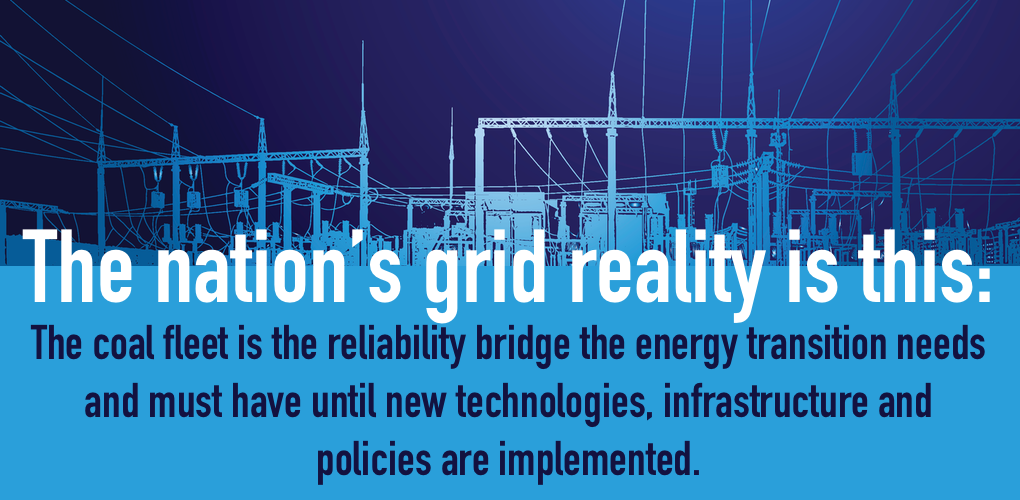
Turning the Unprecedented into the Ordinary
While all eyes have been on the eroding affordability of the nation’s energy supply, the reliability of the grid and the natural gas delivery system are now back in the spotlight. Despite the colossal grid failure in Texas last winter, blackouts in California and countless after-action reports and hearings on national reliability issues, the situation only appears to be getting worse.
The North American Electric Reliability Corp. (NERC) just warned that power grids from Texas to the Midwest, Pacific Northwest and even New England are at risk of blackouts should we see another prolonged deep freeze this winter.
Bloomberg called NERC’s warning “unprecedented,” and illuminated the seriousness of the report by pointing out that the near-complete collapse of the Texas grid last winter left millions in the dark, killed more than 210 people and resulted in at least $20 billion in damages.
Perhaps even more unprecedented is that nothing substantive is underway to ensure that what happened in Texas won’t happen again. Despite promises to fix the grid and make sure last winter’s catastrophe isn’t repeated, little has changed. NERC has warned that the Texas grid could see a power shortfall of 37% in extreme conditions, more than enough for a repeat of last winter’s tragic debacle.
“We’re advising the industry to ensure the readiness of their operating plans to manage potential supply shortfalls and to take proactive steps for generator readiness, fuel availability and sustained operations in extreme conditions,” Mark Olson, manager of reliability assessments at NERC, told reporters.
The problem – particularly in Texas – is that regulators and electric utilities have their hands tied in large degree to address many of the challenges that proved debilitating last winter and that seem primed to wreak havoc across grids this winter.
“A great winterized plant with no fuel in front of it isn’t very valuable”
Analysis of the Texas grid failure has zeroed in on the failure of the natural gas delivery system to stand up to bitter cold and provide fuel when and where it was needed. As a joint report from the Federal Energy Regulatory Commission and NERC noted, natural gas-fired units represented 58% of all generating units experiencing unplanned outages, derates or failures to start.
While plant freezing issues were the largest challenge across all generation types, fuel supply issues were the second largest, with 87% of fuel supply issues gas related. In the Southwest Power Pool, which also got hit hard by winter storm Uri, natural gas fuel supply issues greatly exceeded the number of freezing issues (458 versus 86).
Unfortunately, addressing a lack of weatherization in the natural gas delivery system is simply beyond the control of grid regulators who are tasked with keeping the lights on. NERC President and CEO Jim Robb testified during a Senate Energy and Natural Resources Committee hearing earlier this year that, “the area that Congress should reflect on, and potentially take action, is to think about how [weatherization] extends into the natural gas and fuel sectors. Because having a great winterized plant with no fuel in front of it isn’t very valuable. And that’s where our authorities right now stop.”
If the Texas power system stands on two legs – power generation and the gas delivery system – and both broke last winter, only one has been fixed. The gas delivery system remains just as vulnerable and ill-prepared as it was last year when its performance was deemed a “systemic failure” by the chief energy officer at the University of Houston.
Overreliance on natural gas and just-in-time fuel delivery isn’t just proving a grave vulnerability to energy affordability, but a deepening threat to reliability across the country.
With ever-growing penetration of renewable power and heavy reliance on natural gas on grids across the country, fuel security challenges are becoming fuel security crises. Long the grid’s reliability insurance policy, the coal fleet continues to shrink even as the dispatchable fuel diversity and fuel security provided by it are more essential than ever.
The nation’s grid reality is this: until we can quickly and effectively stand-up interstate high-voltage transmission, deploy long duration battery storage, and winterize the gas delivery system while mandating greater uptake of firm delivery contracts, the coal fleet is the reliability bridge the energy transition needs and must have. Policymakers and regulators must recognize it before unprecedented winter reliability catastrophes simply become ordinary.
- On November 23, 2021
